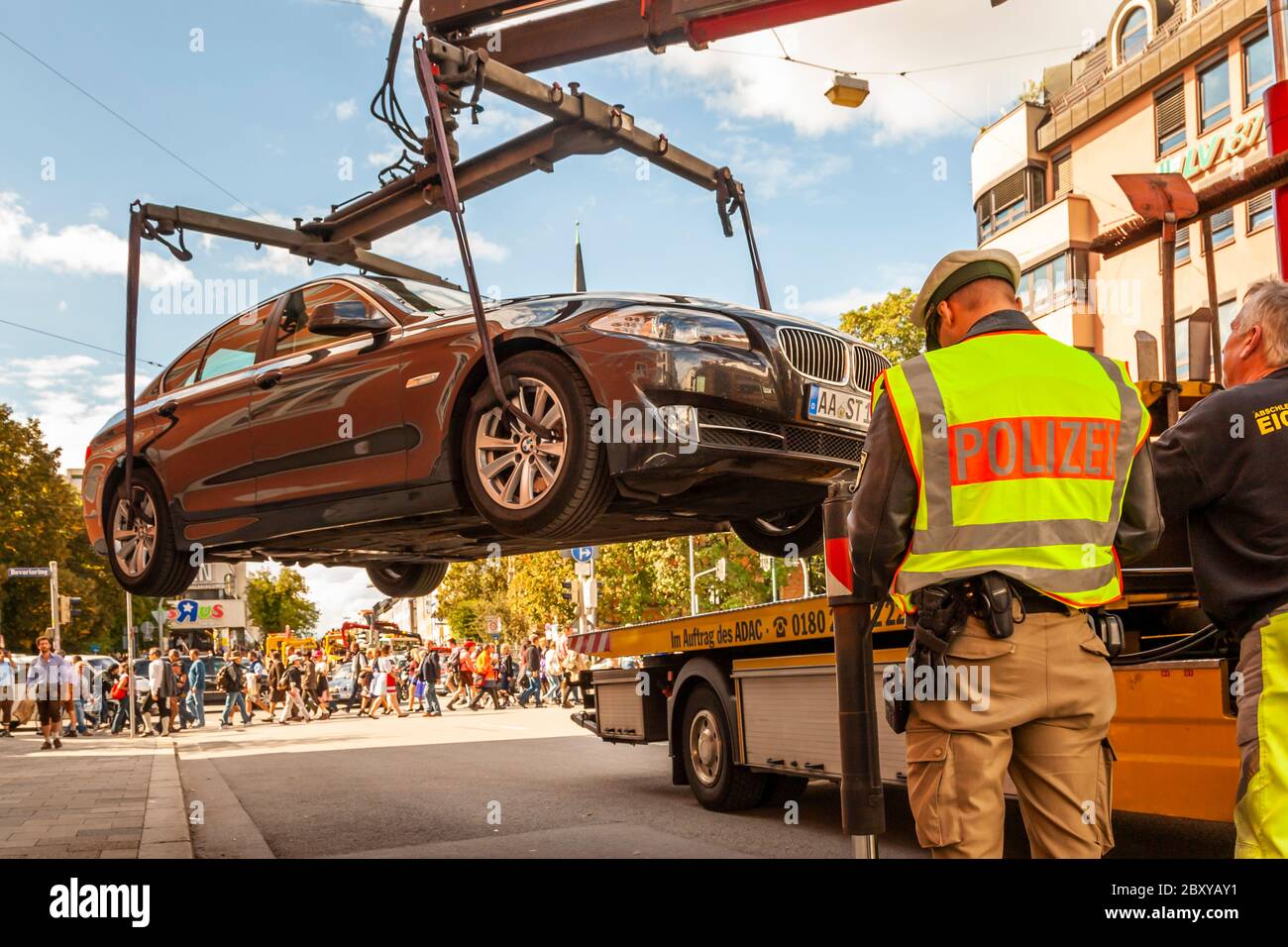

- #Light blue car getting towed driver#
- #Light blue car getting towed manual#
- #Light blue car getting towed registration#
maximum rated carrying capacity of the tyres. maximum carrying capacity of the trailer. rated capacity of the towbar and tow coupling. 
The loaded mass of the trailer must not exceed the lesser of: If a trailer is required to be registered it must be fitted with a rear number plate. They must be built to meet the standards for registration.

Trailers must be a suitable size and type for their intended tasks. Transfer some of the weight from the towbar to the front and rear suspension of the vehicle.Īs load equalisers may overload the towbar and its components, check with the towbar manufacturer for advice before use.Help the vehicle retain normal suspension height and effective steering control.Load equalisers can be used when towing large caravans. Towbars must not protrude dangerously when there is no trailer connected.

The exception is where the towbar is a permanent part of the vehicle. This is compulsory for vehicles built after 1 January 1992.
make and model of the vehicle it is intended for, or the manufacturer’s part number. The towbar should be clearly and permanently marked with its: The rated capacity of the towbar and coupling should not be exceeded. some vehicles need structural reinforcement and/or special suspension and transmission options and load-distributing devices to be able to tow heavier trailers.Ī properly designed and fitted towbar is essential for towing. for vehicles with automatic transmission, an extra transmission oil cooler may be needed. extra mirrors may be needed for the towing vehicle if towing a large trailer. brake connections if the trailer is fitted with power or electric brakes. towbars and couplings of a suitable type and capacity. Towing vehicles must be properly equipped with: rear number plates and lights must not be obscured by the towbar when there is no trailer connected. #Light blue car getting towed registration#
all vehicles must comply with all relevant standards for registration and be roadworthy at all times.
#Light blue car getting towed manual#
Vehicle manufacturers usually indicate in the owner’s manual the maximum weight and other features of trailers appropriate for the vehicle. There are rules and standards for towing vehicles, parts and tools, including towbars and safety chains. If travelling to another State, check with the relevant roads authority whether there are different rules.
tyres are still properly inflated and not rubbing on suspension or body work. couplings, all doors, hatches, covers and any load or equipment, are still properly secured. oil, water, brake fluid, battery and other service checks have been done on the vehicle.Īt regular intervals during the trip, check that:. all lights work and safety chains are properly connected. the trailer’s wheel-bearings, suspension and brakes work properly. Always drive to the limits set by the manufacturer, as well as road, traffic and weather conditions. #Light blue car getting towed driver#
In the case of towing a single trailer, the driver driving a vehicle, with a gross vehile mass (GVM) over 4.5 tonnes or a vehicle and trailer combination with a gross combination mass (GCM) over 4.5 tonnes, must not exceed 100 km/h, regardless of the signed posted speed limit. Plan more rest stops and shorter travelling days as towing is more stressful and tiring than normal driving. Take care not to hold up traffic unnecessarily. Otherwise a steady speed or slight acceleration should be held if possible until the sway stops. If the trailer’s brakes can be operated by themselves they should be applied gently. If a trailer starts to sway, the vehicle’s brakes should not be applied, except as an absolute last resort. Trailers tend to jerk the back of the vehicle around and can cause sway (snaking). Slow down well before entering corners and curves. Use a lower gear when travelling downhill to increase vehicle control and reduce strain on brakes. Use the accelerator, brakes and steering, smoothly and gently at all times. Look further ahead than normal so you can react to changes in traffic or road conditions. Avoid sudden lane changes and changes of direction. When reversing, it is advisable to have someone outside the vehicle giving directions. Allow longer distances for braking, overtaking and joining a traffic stream. Allow for the trailer’s tendency to ‘cut-in’ on corners and curves.








 0 kommentar(er)
0 kommentar(er)
